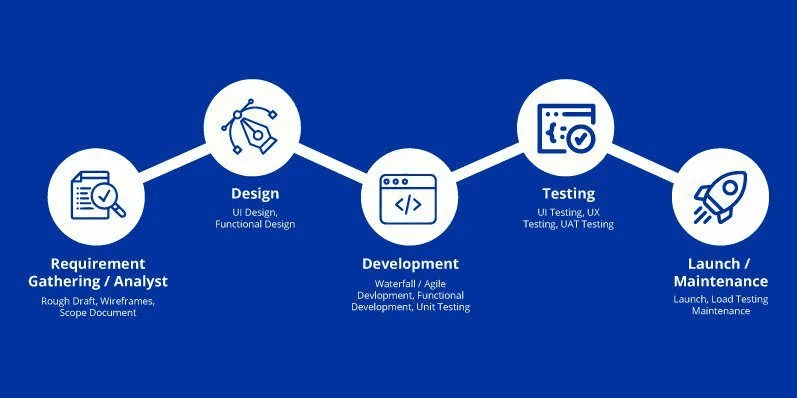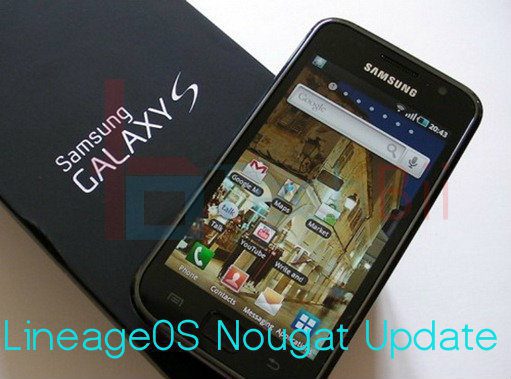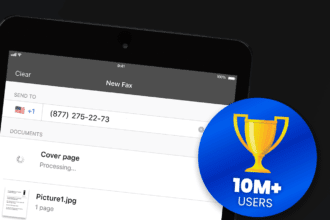The need for mobile applications rapidly increases in our quickly changing digital environment. Adhering to the Mobile App Development Lifecycle is cumbersome but enriching for people who realize the necessary steps. This path from initiation to final release guarantees that an app satisfies both business requirements and pleases its users. In this informative blog, we will investigate all stages of this lifecycle to figure out how to turn a novel idea into a successful mobile application.

Planning Your Mobile App
The start of your app’s path is during this planning stage. Begin by characterizing the main goal of your app and the difficulties it seeks to overcome. Determine who your ideal audience is to grasp the users that will gain from the app. Also, determine the essential characteristics that your app needs. Investigate the market to learn about what competitors give and discover options for uniqueness. Determining focused objectives and preparing an elaborate strategy will steer your development team. Your roadmap must contain timeframes and finances alongside specific objectives. The prudent organization lays the groundwork for an easy journey in app creation and ultimately results in a triumph.
Designing the User Interface and User Experience

Engaging user experience demands a strong design. In this part of the process designers craft the User Interface (UI) and User Experience (UX) layouts. Successfully navigating the app requires these elements to be straightforward and attractive. By creating wireframes and prototypes designers can illustrate the design and operations of the app. Adding simplicity and uniformity in design will boost the user experience positively and make the app a practical and pleasing way to engage with.
Development and Coding
The app’s blueprint is shaped in real form through code in the development stage. The right technology framework is selected by a mobile app development company in the USA to meet the app’s needs. In this phase, authors write the code necessary for creating the app’s framework and connecting important APIs while adding backend support. For the app to run smoothly and honor its design intent developers should partner with designers closely. To achieve continuous progress and feedback within the development process, agile techniques often divide the process into manageable sprints. Developers need to detail everything to create a secure and effective mobile application.
Testing and Quality Assurance
Your app needs an enhanced user experience thanks to testing and Quality Assurance (QA). In this part of the process, slow testing is necessary to uncover and correct any problems. Testers from a top app development company in the USA utilize various automated devices as well as physical examinations to review and evaluate the performance of the app.
Testing on various devices and operating systems confirms the app performs efficiently for everyone. Focusing on achieving fast performance and trustworthiness with a good user experience during this stage is important. Through thorough testing, developers can fix problems before the app is released and offer users a better experience from the outset.
Deployment and Launch
Once the testing phases for your app are complete, you should prepare for deployment and launch. The crucial task of a top mobile app development company in the USA is to deploy your app on platforms like Google Play and the App Store. All platforms require specific protocols which you must honor to sidestep any delays. Launching an app means doing more than just clicking the publish button. A careful date for the release must be established while producing marketing materials such as teaser videos and press releases.
During the run-up to the launch, think about a preparatory launch aimed at a smaller crowd. It collects initial responses and adjusts any needed changes before the complete launch. Reach out to your early users by email campaigns or social media platforms to establish a vibrant community for your app.
Before the major event takes time to confirm that all app store information is prepared. App titles alongside description images and selected keywords must increase discoverability. Furthermore, set up your support resources to deal with any questions or problems that may occur.
On launch day, synchronize with your marketing team to confirm that your promotional strategies are connected. Track the effectiveness of the app from the start with analytics tools and note downloads and user ratings. Urge pleased users to write positive comments and ratings because this has a major effect on how visible and genuine your app appears. Careful preparation of your approach for deployment and launch allows you to boost your app’s initial effect and establish a basis for lasting success.
Related article: How To Hire a Mobile App Developer: Tips, Prices, and Strategies
Marketing and User Acquisition
After the launch of your app effective advertising is key for gaining users and achieving success. Build your social media strategy initially; produce interesting content that aligns with your specific audience. Convey updates and audience reviews to grow your visibility online.
- Work together with influencers to showcase your app to a broader group. The true feedback and demonstrations offered by influencers can be convincing to users.
- Using advertising as payment will act as another beneficial tool. Targeted ad choices from platforms such as Google Ads and Facebook Ads guarantee your app gets to the right individuals. Assess your ad performance to enhance your campaigns.
- Referral programs work well Urge previous users to refer friends through the provision of rewards like discounts or in-app offers. In addition to enlarging your user number, it cultivates a community centered around your app.
- Keep connected with your users using newsletters or social media posts. Showcase new improvements and present personal stories while providing valuable insights to boost user interaction. Regular exchanges build loyalty and make your app remembered by users.
- Additionally, you could plan webinars or live events to display the special attributes of your application. This can welcome prospective users and show them exactly what your application provides. To ensure your app’s future success you need effective strategies in marketing and user acquisition.
Post-Launch Maintenance and Updates
Following your app’s launch further steps include important roll-out maintenance and updates. Maintaining your app in optimal condition and connecting with its users is what this phase focuses on. To resolve existing bugs and incorporate new functions that users desire you must keep updating. To boost the app’s usefulness and quality you must pay attention to user comments. This contributes to making users delighted and interested.
- It is vital to implement security updates to secure user data and meet updated requirements. Update your app to be compatible with emerging devices and operating systems to maintain compatibility. This allows for a smooth journey for all users.
- Performance monitoring tools can enable you to monitor the stability and speed of your app. Resolving issues on time will lessen downtime and raise user satisfaction. Keeping the content contemporary and meaningful helps to keep users engaged. Revise often in-app data including news and product lists.
- Plan a routine for updates and maintenance to remain ahead. This keeps your application competitive and ensures it keeps delivering value. Updating and adding new features to your app excites the users and connects you with the community.
Conclusion
A successful mobile app needs more than just a basic thought; it involves a structured and detailed framework. For building a sturdy and appealing application each stage of the Mobile App Development Lifecycle is important. By adopting a comprehensive plan and creative vision as well as thorough testing and strategic release of your application, an app development company in the USA can create a solution that distinguishes itself from the competition.
The steady review cycle is important to keep your app both relevant and competitive. Pursuing each step of the lifecycle helps you realize your business targets and offers a highly engaging and hassle-free experience for your users. Your mobile app can reach sustainable achievement and top-notch user satisfaction with hard work and a defined plan.








